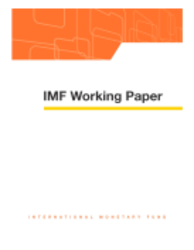
Mind the Gap : What is the Best Measure of Slack in the Euro Area?
Assessing the magnitude of the output gap is critical to achieving an optimal policy mix. Unfortunately, the gap is an unobservable variable, which, in practice, has been estimated in a variety of ways, depending on the preferences of the modeler. This model selection problem leads to a substantial degree of uncertainty regarding the magnitude of the output gap, which can reduce its usefulness as a policy tool. To overcome this problem, in this paper we attempt to insert some discipline into this search by providing two metrics-inflation forecasting and business cycle dating-against which different options can be evaluated using aggregated euro-area GDP data. Our results suggest that Gali, Gertler, and Lopez-Salido's (2001) inefficiency wedge performs best in inflation forecasting and production function methodology dominates in the prediction of turning points. If, however, a unique methodology must be selected, the quadratic trend delivers the best overall results.
Publication date: December 2001
ISBN: 9781451874457
$15.00
Add to Cart by clicking price of the language and format you'd like to purchase
Available Languages and Formats
| English |
Prices in red indicate formats that are not yet available but are forthcoming.
Topics covered in this book
This title contains information about the following subjects.
Click on a subject if you would like to see other titles with the same subjects.
Inflation , Inflation , Output gaps , unobservable components , inflation , forecasting , annual inflation , equation , survey
Also of interest
Summary
Copyright © 2010 - 2025
Powered by:
AIDC



